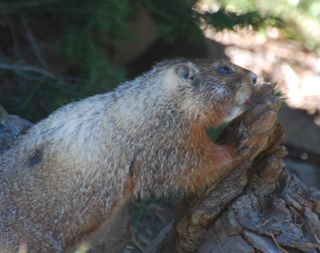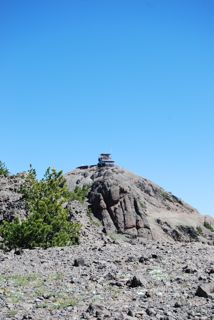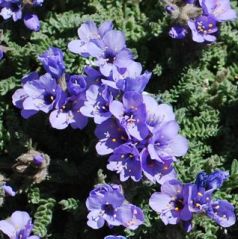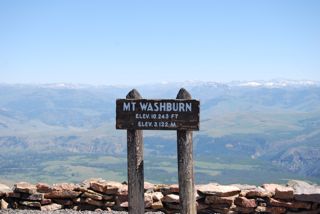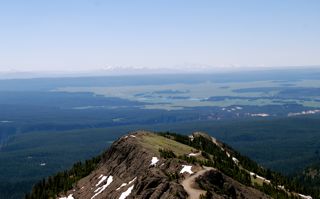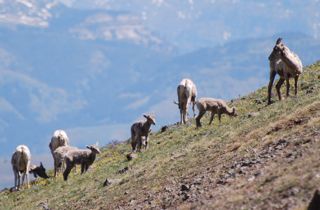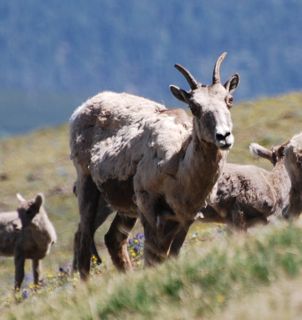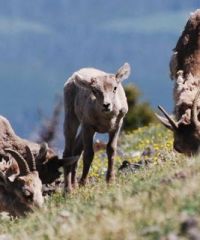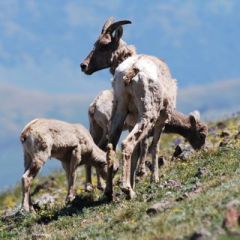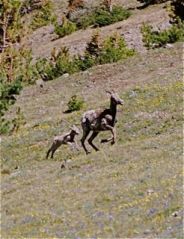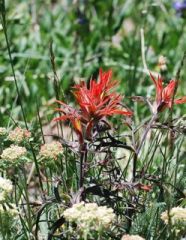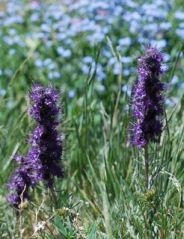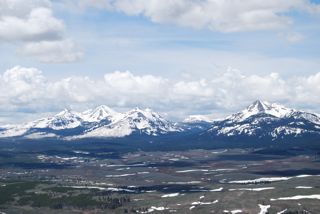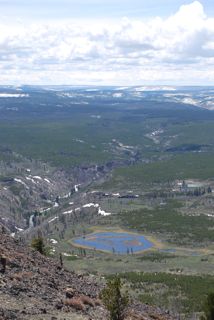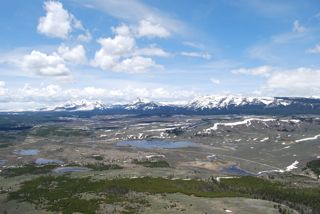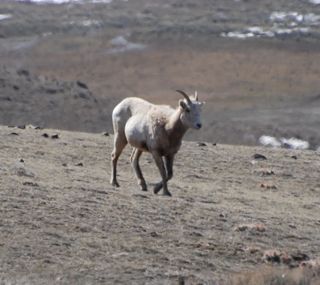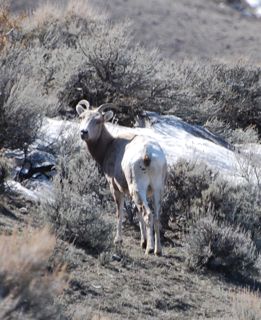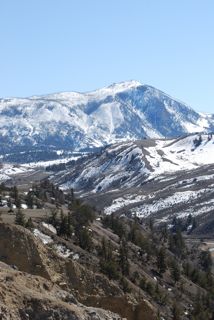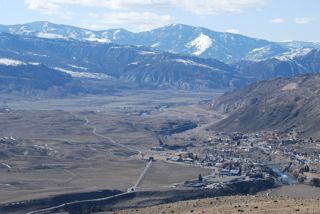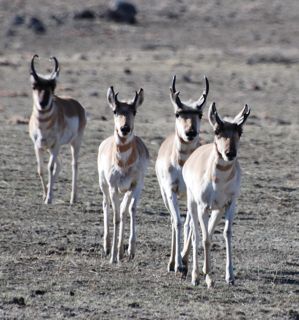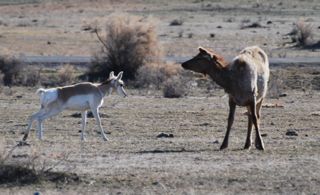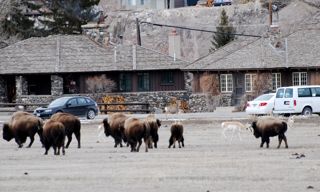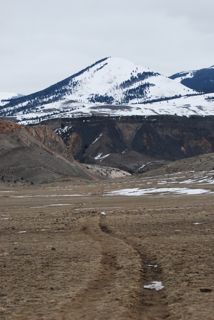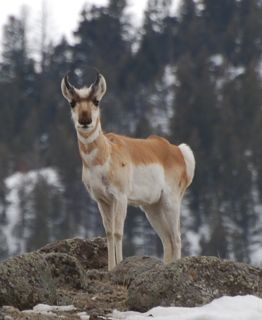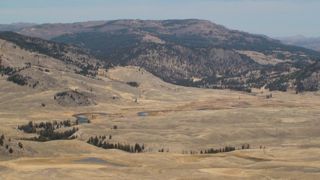 Slough Creek from Specimen RidgeYellowstone’s expanse of rolling hillsides and gentle meadows appear endless in most areas of the park, and today I gazed at miles of this sublime landscape. I ventured up Specimen Ridge, which overlooks Lamar Valley to the northeast, and the Grand Canyon of the Yellowstone to the south.
Slough Creek from Specimen RidgeYellowstone’s expanse of rolling hillsides and gentle meadows appear endless in most areas of the park, and today I gazed at miles of this sublime landscape. I ventured up Specimen Ridge, which overlooks Lamar Valley to the northeast, and the Grand Canyon of the Yellowstone to the south.
The trail wanders through sub-alpine meadows, all a comforting shade of brown with the arrival of fall. Small patches of the bright yellow dress of aspen trees decorated distant ridges. A lone bison munched on the sparse fare, and raised his head to consider my presence. Not wanting to disturb him (nor get charged) I gave him a wide berth.
Wolves frequent this area, although I was not lucky enough to see any today. The territories of the Slough, Druid, and Agate packs all intersect near Specimen Ridge and recent entries on the trail register indicate sightings.
The name Specimen Ridge, according to Yellowstone Place Names, originates from prospectors, as the area was known for its specimens of amethysts. Amethyst Mountain, 9,614 feet, is the highest point on the ridge.
I made a quick video of the 360 views from the north end of Specimen Ridge.







